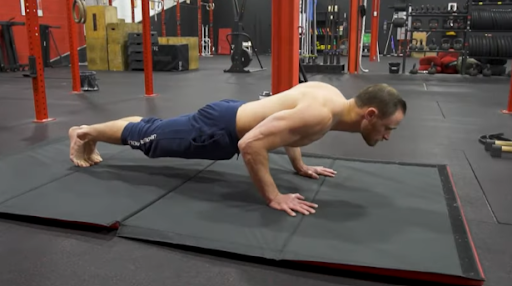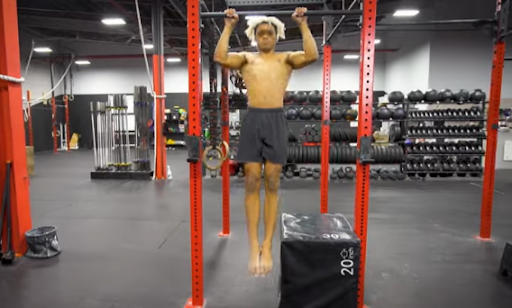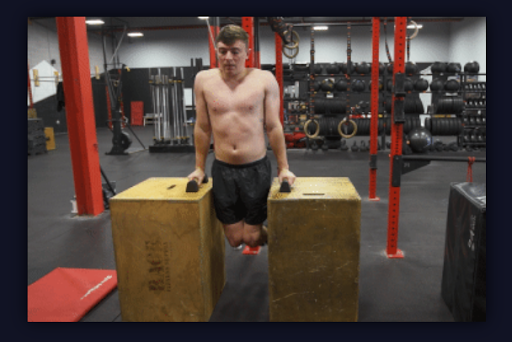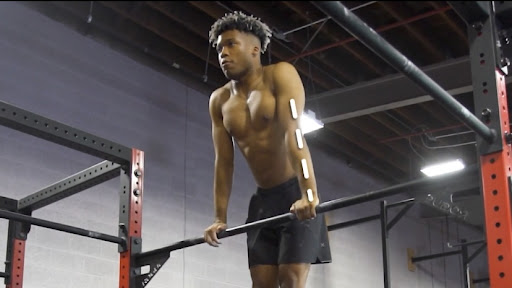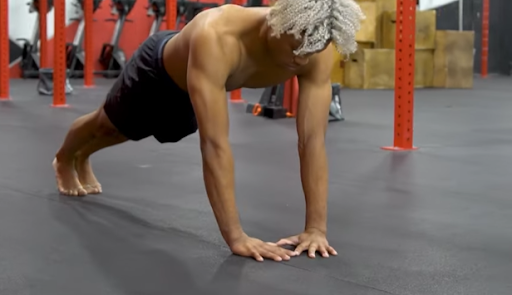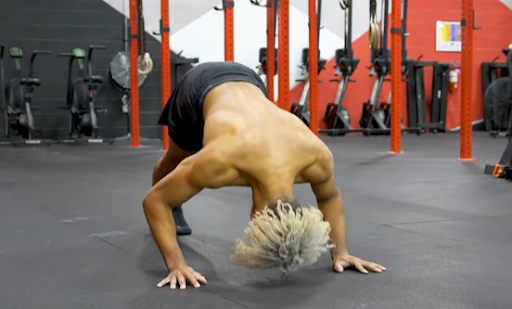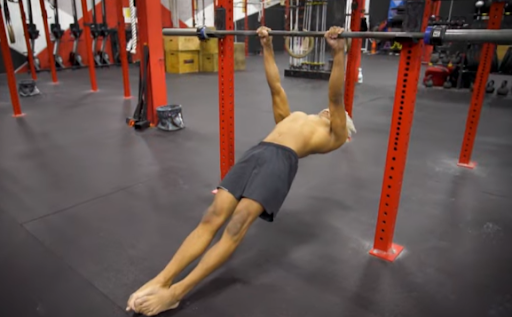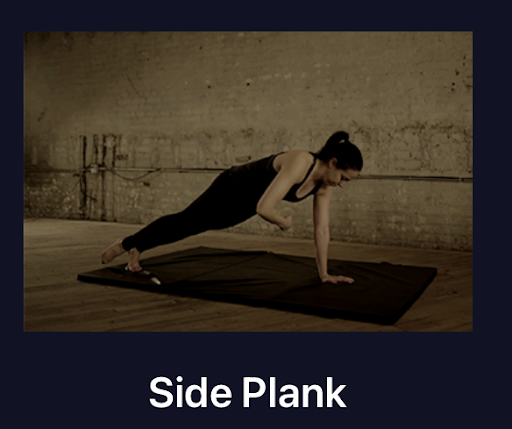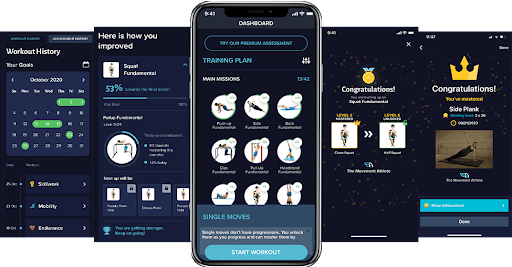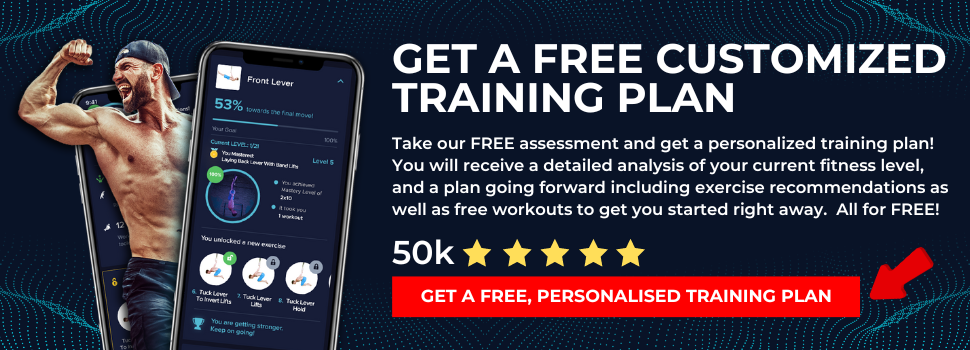Ever wondered how some folks build serious strength without using gym equipment?
Welcome to the world of upper-body calisthenics! This method uses just your body weight to sculpt your chest, shoulders, arms, and back through basic exercises like push-ups, pull-ups, and dips.
Forget about the packed gym and discover the freedom of exercising in the great outdoors or the comfort of your living room. Calisthenics isn’t just for building muscle; it’s about developing resilience and flexibility, allowing you to work out whenever and wherever you want.
The challenge goes beyond lifting weights; it’s about mastering balance and coordination as you control your body’s movements. This practice isn’t only physical—it also boosts your mental and spiritual well-being.
This article is your comprehensive guide to upper-body calisthenics. It covers the fundamentals, the best exercises for the upper body, creating a workout plan, and more.
😲Can You Build Upper-Body Strength with Calisthenics?
Absolutely! Calisthenics does wonders for upper-body strength.
When you incorporate bodyweight exercises, you’re not only building muscle but also enhancing your flexibility and joint health.
But, what exactly is upper-body strength?
Every action, from lifting objects and pushing doors to high-fiving, engages your upper muscles. These muscles are crucial for daily tasks like carrying groceries and playing sports.
It’s not just about muscle size; strength, flexibility, and resilience are key. For example, your chest muscles aid in pushing and bench pressing, while your shoulders and back support lifting and carrying tasks.
Building this strength isn’t limited to gym workouts like weightlifting. Incorporating calisthenics—exercises that use body weight, like push-ups—can significantly enhance upper body strength. Other activities like rock climbing, swimming, and yoga also boost upper body capabilities.
Read more here:📍Steel Upper Body Workout
🏆Benefits of Upper Body Calisthenics
So why do calisthenics work out for your upper-body?
Well, calisthenics for upper-body offers numerous benefits for both physical fitness and overall health. Here are some key advantages:
- Increased Muscle Strength and Endurance: Calisthenics exercises like push-ups, pull-ups, and dips use body weight for resistance, strengthening the chest, shoulders, arms, and back.
- Improved Muscle Tone and Definition: Calisthenics target multiple muscle groups, which increases muscle hypertrophy and definition.
- Enhanced Core Stability: Many upper-body calisthenics exercises also engage the core muscles, including the abdominals and lower back, improving overall stability and balance.
- Flexibility and Mobility: Pull-ups and push-ups improve joint mobility and flexibility by requiring a full range of motion.
- Cost-effectiveness: Calisthenics doesn’t require a gym membership or expensive equipment; these exercises can be performed anywhere, making them very accessible.
- Convenience: You can perform calisthenics at home, in a park, or even in a small space, making it a convenient option for a busy lifestyle.
- Lower Injury Risk: Calisthenics uses your own body weight and has less impact than weightlifting.
- Versatility and Progression: Calisthenics exercises can be easily modified to increase or decrease difficulty, making them suitable for all fitness levels. Progressions allow for continuous challenge and improvement.
- Cardiovascular Health Benefits: Although primarily strength-based, the continuous nature of a calisthenics routine can also provide cardiovascular benefits, improving heart health.
- Mental Health Benefits: Like all forms of exercise, calisthenics can help reduce stress, anxiety, and depression and boost overall mood.
Incorporating upper body calisthenics into a fitness routine can be an effective way to enhance physical fitness, flexibility, and mental well-being without the need for specialized equipment.
💪What Muscles Can You Build When Training Upper-Body with Calisthenics?
Building on the numerous benefits of upper body calisthenics, such as improved strength, flexibility, and overall health, it’s important to understand exactly which muscles these exercises target.
Upper-body calisthenics focuses on strengthening and conditioning various muscle groups in the upper body without needing weights or gym equipment. This form of exercise utilizes body weight as resistance and includes a variety of movements that target different muscles for a comprehensive workout.
Here’s a breakdown of key muscle groups and the calisthenics exercises that effectively work on them:
- Chest Muscles (Pectorals)
- Push-Ups: The classic push-up is a powerful exercise to engage the chest, shoulders, and triceps.
- Wide Grip Push-Ups: The emphasis shifts towards the chest muscles by placing the hands wider than shoulder-width apart.
- Back Muscles (Latissimus Dorsi, Rhomboids)
- Pull-Ups: Utilizing a pull-up bar, this exercise strengthens the entire back, enhancing shoulder and arm strength.
- Chin-Ups: Similar to pull-ups but with a different grip, chin-ups place more focus on the biceps and the upper back.
- Shoulders (Deltoids)
- Pike Push-Ups: Targeting the shoulder muscles, this variation involves a higher hip position resembling a pike.
- Handstand Push-Ups: For the more advanced, this exercise greatly strengthens the deltoids, and triceps, and provides core stabilization.
- Arm Muscles (Biceps, Triceps)
- Dips: Using parallel bars or a bench, dips work the triceps with secondary benefits for the shoulders and chest.
- Bodyweight Bicep Curls: Using a pull-up bar and a close grip, lift your body while focusing on contracting the biceps.
- Core Muscles (Abdominals, Obliques)
- Planks: Simple yet effective for core stabilization and endurance.
- Hanging Leg Raises: Suspended from a pull-up bar, this exercise targets the core and enhances grip strength and lower back stability.
These exercises provide a solid foundation for building strength and endurance in the upper body, leveraging gravity and natural body movements to create resistance. By incorporating these exercises into a routine, one can significantly improve muscle tone, strength, and overall fitness without the need for traditional gym equipment.
💪How to Create The Most Effective Upper Body Calisthenics for Your Level
Let’s explore upper-body calisthenics workouts further—they’re like power-ups for your arms, shoulders, and chest!
Imagine this: you’re at home or in the park, and all you need is your own body weight to get a killer workout. It’s convenient, effective, and totally customizable to your fitness level.
Fundamental exercises like push-ups, pull-ups, and dips are the essential building blocks of a workout routine for the upper body. Then, you can mix different variations—like wide-grip pull-ups or diamond push-ups—to target specific muscles and keep things interesting. By customizing these basics, one can focus on specific fitness goals and keep the workout interesting and dynamic.
And here’s the best part: you don’t need a fancy gym or expensive equipment to get in a killer workout. All you need is a little space and a lot of determination. So whether you’re at home, in the park, or even on vacation, you can squeeze in a quick calisthenics session and feel amazing afterward.
🙌What Makes an Effective Upper Body Calisthenics Program?
When crafting an upper body calisthenics program, integrating diverse workout elements is crucial to developing not just strength and muscle but also skill and endurance. Here’s how each component fits into an effective upper-body calisthenics regimen, as seen in The Movement Athlete app:
1. 🙌 Dynamic Warm-Up and Mobility Routine
Starting with a dynamic warm-up is crucial for preparing the muscles and joints for the intensity of the exercises. Mobility exercises benefit the upper body by increasing the range of motion in the shoulders, elbows, and wrists, critical for movements like push-ups, pull-ups, and dips.
Exercises such as arm circles, shoulder shrugs, and wrist rotations help prevent injuries and enhance the performance of more complex movements.
2. 🤸 Skill Work
Skill development is foundational in calisthenics, particularly for complex movements like ring dips. This phase focuses on refining techniques and movement patterns that are crucial for mastering more advanced exercises. It involves practicing with precision and control, emphasizing form and efficiency rather than intensity.
For upper body, this could include drills that improve scapular mobility, wrist strength, and body alignment, which are essential for subsequent strength exercises.
3. 👊 Strength Work
This segment is the core of upper body calisthenics. It involves performing a variety of exercises designed to build strength across the upper body, including push-ups, pull-ups, and dips. Each session aims to challenge your muscles through progressive overload, ensuring that each repetition and set pushes the boundaries of your previous capabilities.
The focus here is on increasing the resistance and complexity of exercises as you advance, effectively tuning your body to gain maximum strength.
4. 💪 Muscle Work
Muscle work is dedicated to hypertrophy, or muscle growth, which contributes to both a more defined appearance and increased strength. Activities in this category are performed at a controlled intensity, often focusing on slower, more deliberate movements that maximize muscle tension—like slow negatives in pull-ups or dips.
This muscle work not only enhances muscle size but also reinforces the muscle fibers’ ability to sustain effort, which is crucial for performing high-level calisthenics skills.
5. 🏃 Endurance Work
Endurance training in calisthenics is about more than just lasting longer; it’s about maintaining precise form and consistent performance over extended periods or more complex sequences.
This could involve longer sets, reduced rest intervals, or integrated circuits that challenge your ability to sustain effort through fatigue. Such training is essential for improving your capacity to hold positions like the plank or handstand or for performing high-repetition sets without compromising form.
6. 💧 Cooldown and Flexibility Exercises
Winding down after intense training is important. Stretching helps alleviate muscle tightness, promote blood flow, and aid recovery.
Incorporating flexibility exercises specifically for the upper body, like stretches for the chest, shoulders, and arms, ensures that the muscles maintain or improve their elasticity, which is vital for performance and health.
🌟Steps to Designing an Effective Upper Body Training Plan for Your Level
Designing an effective upper body calisthenics workout centered around ring dips requires a keen understanding of your current capabilities and a strategic increase in intensity. Here’s a structured approach to tailoring your workout:
Creating an effective upper-body calisthenics workout begins with a clear understanding of your current fitness level and a planned progression of intensity. Here’s a guided method to customize your workout effectively:
1. 🎯 Initial Assessment
Start by assessing your current skill level in foundational upper body exercises. Determine which movements you can perform proficiently and identify areas that need improvement. This initial evaluation helps you set a realistic baseline for your workout plan.
2. 🎯 Exercise Selection
Choose a variety of exercises that target different muscles in the upper body, such as push-ups, pull-ups, and dips. Select movements that cater to your skill level and allow for progressive overload, meaning they can be made gradually more challenging as your strength and endurance improve.
3. 🎯 Workout Structure
Design your training sessions by deciding on the number of sets, repetitions, and rest periods. This should reflect your fitness stage—whether beginner, intermediate, or advanced. Your routine should be challenging but achievable, encouraging continuous improvement in strength, skill, and endurance.
By following these steps, you can develop a tailored and effective upper-body calisthenics program that grows with you as you advance
🤸Progression Techniques in Upper Body Calisthenics: From Beginner to Advanced Levels
Let’s chat about how to level up your upper body calisthenics game from beginner to advanced. It’s like unlocking new levels in your favorite video game, but instead of earning power-ups, you’re earning strength and skills!
So, as a beginner, you’re starting with the basics—think push-ups, pull-ups, and dips. It’s all about mastering proper form and building a solid foundation. But don’t worry if you can’t do a full push-up or pull-up yet. There are plenty of progressions to help you get there, like starting with knee push-ups or assisted pull-ups.
As you feel more comfortable with the basics, it’s time to level up to intermediate moves. This might mean trying more challenging variations, like diamond push-ups or chin-ups. You’re starting to feel stronger and more confident in your abilities, and it’s paying off big time!
But why stop there? Now it’s time to tackle the advanced moves. We’re talking about handstand push-ups, muscle-ups, and one-arm pull-ups—yeah, they sound intimidating, but trust me, they’re within your reach with dedication and practice.
But here’s the thing: progression isn’t just about mastering new moves; it’s also about continuously challenging yourself. That might mean increasing the number of reps, reducing rest time between sets, or adding extra weight to your exercises.
Read more here:📍 Progressions, The Movement Athlete’s Bread and Butter
Remember to listen to your body along the way. Progression is a journey, not a race, so take your time and celebrate each milestone.
✨10 Best Upper-Body Calisthenics Exercises That Will Transform Your Workout
Now, let’s discuss some upper-body calisthenics exercises you can add to your workout plan. These exercises are versatile, requiring minimal space and equipment while effectively building muscle, boosting endurance, and enhancing functional strength.
1. 👊Push-Ups
This foundational exercise targets the chest, shoulders, and triceps. Variations like wide-grip push-ups emphasize the chest, while close-grip push-ups focus more on the triceps.
How to do it:
- Start in a plank position with hands slightly wider than shoulder-width apart.
- Engage core and glutes to maintain a straight line from head to heels.
- Lower body towards the ground by bending elbows until chest almost touches the floor.
- Push through palms to extend arms and return to the starting position.
- Keep neck neutral and exhale on the way up.
- Repeat for desired reps, maintaining control throughout.
- Modify as needed with knee push-ups or incline variations.
- Cool down and stretch your chest, shoulders, and arms after the workout.
Sets and Reps:
For most, aiming for 3-4 sets of 10-15 reps is beneficial, adjusting based on personal fitness levels. Beginners might find it helpful to start with knee push-ups or reduced reps to build up strength gradually.
Check out this YouTube video on perfecting push-ups:
2. Pull-Ups
Pull-ups are excellent for building back, biceps, and grip strength. To target different muscles, they can be performed with various grips (wide, narrow, chin-up, pull-up).
How to do it:
- Grip the bar shoulder-width apart with palms facing away.
- Engage the core and pull the body upwards until the chin clears the bar.
- Lower body with control, fully extending arms.
- Repeat for desired reps, focusing on form.
- Modify as needed with assistance or variations.
- Cool down and stretch after the workout.
Sets and Reps:
Pull-ups should be performed in 3-4 sets of 6-12 reps. Those new to pull-ups can use resistance bands or focus on the eccentric (lowering) phase of the exercise to build the necessary muscular endurance and strength.
3. 👊Dips
Dips primarily work the chest, triceps, and shoulders. You can adjust the difficulty by changing the angle or adding weight.
How to do it:
- Grip parallel bars with hands slightly wider than shoulder-width apart.
- Lower body by bending elbows until shoulders are below elbows.
- Push through palms to extend arms and raise body back up.
- Repeat for desired reps, focusing on form.
- Modify with assistance or variations as needed.
- Cool down and stretch afterward.
Sets and Reps:
Dips can be quite challenging, targeting the triceps, chest, and shoulders. Performing 3-4 sets of 8-12 reps allows for significant strength building. Beginners might use assistance or perform fewer reps as they increase their strength.
4. Handstand Push-Ups
Handstand push-ups are advanced exercises that heavily target the shoulders and triceps. They require significant balance, core strength, and shoulder stability.
How to do it:
- Start in a handstand position against a wall with hands shoulder-width apart.
- Lower head towards ground by bending elbows.
- Push through palms to extend arms and return to starting position.
- Maintain core engagement and control throughout.
- Repeat for desired reps, focusing on form.
- Modify with assistance or progressions as needed.
- Cool down and stretch afterward.
Sets and Reps:
Typically, 3-4 sets of 4-8 reps are recommended. Beginners should consider using wall assists and focus on building up strength through progressive training.
5. 👊Muscle-Ups
Muscle-ups combine a pull-up and a dip into one fluid motion. They’re challenging but effectively work multiple upper-body muscle groups.
How to do it:
- Start hanging from a bar with hands slightly wider than shoulder-width apart.
- Pull body upwards explosively, leaning torso back slightly for momentum.
- Transition by pushing chest forward and pushing down on the bar.
- Once hips are above the bar, smoothly transition into dipping phase.
- Press upwards through palms to complete the movement.
- Lower back down with control.
- Repeat for desired reps, focusing on form.
- Modify with assistance or progressions as needed.
- Cool down and stretch afterward.
Sets and Reps:
Aim for 3-4 sets of 3-6 reps can help build proficiency in this dynamic movement. Using assistance or gradual progression exercises can also be beneficial for those just starting.
6. Diamond Push-Ups
Diamond push-ups are a variation of push-ups where the hands are placed close together, targeting the triceps, inner chest, and shoulders more intensely.
How to do it:
- Start in a plank position with hands close together in a diamond shape.
- Lower chest towards hands while keeping elbows close to sides.
- Push through palms to extend arms and return to starting position.
- Repeat for desired reps, focusing on form.
- Modify as needed with knee push-ups or elevated surfaces.
- Cool down and stretch afterward.
Sets and Reps:
Focusing more intensely on the triceps and inner chest, diamond push-ups are best performed in 3-4 sets of 8-12 reps. This variation should be done with careful attention to keeping the elbows close to the body to maximize effectiveness.
7. 👊Archer Pull-Ups
Archer pull-ups are unilateral exercises that engage one arm more than the other, promoting balanced strength development.
How to do it:
- Grip the pull-up bar with one hand, other arm extended to side.
- Pull body towards gripping hand while keeping other arm straight.
- Lower body back down with control.
- Repeat for desired reps, then switch sides.
- Modify with assistance or progressions as needed.
- Cool down and stretch afterward.
Sets and Reps:
Perform 3-4 sets of 4-6 reps per side to ensure that each arm is being trained equally, which is crucial for overall muscle symmetry and strength.
8. 👊Pike Push-Ups
Pike push-ups mimic a shoulder press motion, targeting the shoulders and upper chest. They’re particularly useful for those who can’t do handstand push-ups yet.
How to do it:
- Start in a push-up position with hands on the ground, hips raised in an inverted V shape.
- Lower head towards ground by bending elbows.
- Push through palms to extend arms and return to starting position.
- Repeat for desired reps, focusing on form.
- Modify with knee push-ups or elevated surfaces if needed.
- Cool down and stretch afterward.
Sets and Reps:
Perform 3-4 sets of 8-12 reps to build shoulder strength. This exercise is a good stepping stone to more complex exercises like handstand push-ups.
9. 👊Australian Pull-Ups (Inverted Rows)
Also known as inverted rows, these exercises work the upper back, biceps, and grip strength. They’re performed using a horizontal bar or rings.
How to do it:
- Grip a waist-high bar with palms facing towards you.
- Pull chest towards the bar, squeezing shoulder blades.
- Lower body back down with control.
- Repeat for desired reps, focusing on form.
- Modify with higher bar or assistance as needed.
- Cool down and stretch afterward.
Sets and Reps:
Doing 3-4 sets of 8-15 reps are ideal, depending on the angle and height of the bar, which can vary the difficulty
10. 👊Plank Variations
Planks engage the core while stabilizing the upper body, improving overall strength and endurance. Variations like side planks and plank rotations add variety and challenge to the exercise routine.
How to do it:
- Standard Plank: Hold the push-up position, focusing on core engagement.
- Side Plank: Lift hips off the ground while propped on elbow and forearm.
- Plank with Shoulder Taps: Tap alternate shoulders while in the plank position.
- Plank with Leg Raises: Lift one leg at a time while maintaining the plank.
- Plank with Arm Raises: Extend arms out in front while in plank position.
- Cool down and stretch afterward.
Sets and Reps:
Instead of focusing on repetitions, planks are about duration and maintaining form. Holding each variation for 30-60 seconds across 3-4 sets works well. Variations such as side planks or planks with arm raises increase the challenge and engagement of different muscle groups.
💥45-Minute Upper Body Calisthenics Workout Sample
Now, let’s start building strength with our sample upper-body calisthenics workout. This 45-minute workout is perfect whether you’re just starting out or looking to level up.
📌Beginners 45-Minute Sample Calisthenics Workout for Upper Body
This beginner workout focuses on using body weight to build strength in areas such as the chest, back, shoulders, and arms. Each session starts with a 5-minute warm-up to prepare your muscles, and it concludes with a cool-down and stretch to promote recovery.
Warm-Up (5 minutes)
- Arm Circles: 30 seconds in each direction
- Jumping Jacks: 1 minute to increase heart rate
- Dynamic Chest Stretches: 30 seconds to loosen the chest
- Shoulder Shrugs: 30 seconds to relax neck and shoulders
Main Workout (35 minutes)
Perform each exercise for the specified number of sets and repetitions, taking a 60-second rest between sets.
- Push-Ups (Targets chest, shoulders, triceps)
- 3 sets of 8-12 repetitions
- Bodyweight Rows (Under a sturdy table or using a low bar; targets back, biceps)
- 3 sets of 8-12 repetitions
- Bench Dips (Targets triceps)
- 3 sets of 10-15 repetitions
- Plank Ups (Start in a plank and then lift yourself up to a push-up position; targets shoulders, core)
- 3 sets of 8-10 repetitions per arm
- Pike Push-Ups (Targets the shoulders and upper chest)
- 3 sets of 8-10 repetitions
- Chin-Ups or Pull-Ups (If you have access to a bar; target back and biceps)
- 3 sets of as many reps as possible
Cool Down and Stretch (5 minutes)
- Arm Across Chest Stretch: 30 seconds on each side to stretch the shoulders
- Triceps Stretch: 30 seconds on each side
- Shoulder Stretch: 30 seconds on each side
- Gentle Neck Stretches: 30 seconds to ease tension
Tips for Beginners
- Focus on Form: Ensure you perform each exercise properly to avoid injuries and maximize effectiveness.
- Pace Yourself: Start slowly and increase intensity as you build strength and confidence.
- Stay Hydrated: Keep drinking water before, during, and after your workout.
- Progress at Your Own Rate: Increase the difficulty of exercises by adding repetitions or sets as you become stronger.
📌Intermediate 45-Minute Sample Calisthenics Workout for Upper Body
This routine enhances strength and endurance with more complex movements and increased volume. The workout starts with a dynamic warm-up to get your body ready, then it moves through a variety of exercises that target all of the major upper-body muscles, and it finishes with a focused stretch to aid in recovery.
Warm-Up (5 minutes)
- Arm Swings: 30 seconds, swing arms forward and backward
- High Knees: 1 minute to elevate heart rate
- Dynamic Shoulder Rotations: 30 seconds to increase shoulder mobility
- Cat-Cow Stretch: 30 seconds to loosen the back and shoulders
Main Workout (35 minutes)
Each exercise is designed to challenge your body more than basic moves, with added sets and reps or time under tension techniques. Rest for 45 seconds between sets.
- Archer Push-Ups (Targets chest, shoulders, triceps)
- 4 sets of 6-10 repetitions per side
- Tuck Front Lever Rows (If you have access to a pull-up bar; targets back, core)
- 4 sets of 5-8 repetitions
- Tricep Dips on Parallel Bars (Targets triceps, shoulders)
- 4 sets of 12-15 repetitions
- Commando Planks (Alternating arm leads; targets shoulders, core)
- 4 sets of 10-12 repetitions per arm
- Handstand Push-Ups Against the Wall (Targets shoulders, upper chest, triceps)
- 4 sets of 5-8 repetitions
- L-Sit Pull-Ups (If you have access to a bar; target back, biceps, core)
- 4 sets of 6-10 repetitions
Cool Down and Stretch (5 minutes)
- Pec Stretch on Wall: 30 seconds on each side to stretch the chest
- Overhead Tricep Stretch: 30 seconds on each side
- Banded Pull Aparts: 30 seconds to relax shoulders and improve mobility
- Gentle Wrist Stretches: 30 seconds, important, especially after handstand push-ups
Tips for Intermediate
- Focus on Precision: As exercises get tougher, maintaining form is crucial to avoid injury.
- Challenge Yourself: Gradually increase the difficulty by adjusting repetitions and sets, or by adding isometric holds.
- Consistent Hydration: Continue to drink water consistently throughout your workout.
- Listen to Your Body: Adapt exercises and intensity based on physical responses to avoid overtraining.
📌Advanced 45-Minute Upper Body Sample Workout
This workout regimen incorporates advanced techniques and movements to enhance muscle growth, strength, and endurance across the upper body. The session includes a thorough warm-up, intense main exercises with advanced variations, and a cool-down period focusing on deep stretching and relaxation.
Warm-Up (5 minutes)
- Dynamic Arm Rotations: 1 minute, including both forward and reverse motions
- Boxer Shuffle: 1 minute to maintain a high heart rate
- Scapular Shrugs: 30 seconds, performed on a pull-up bar to engage the upper back
- Inchworms: 1 minute to warm up the arms, chest, and core
Main Workout (35 minutes)
This part of the workout is highly demanding, incorporating exercises that engage multiple muscle groups focusing on stability and strength. Rest for 30-45 seconds between sets.
- Planche Push-Ups (Targets chest, shoulders, triceps, core)
- 4 sets of 4-6 repetitions
- One-Arm Pull-Up (Targets back, biceps; alternate arms each set)
- 4 sets of 3-5 repetitions per arm
- Korean Dips (Targets chest, shoulders, and triceps in a unique angle)
- 4 sets of 8-10 repetitions
- Human Flag Holds (Side hold on a vertical pole; targets shoulders, obliques, core)
- 4 sets of 10-20 seconds per side
- 90-Degree Push-Up (A planche to handstand push-up; targets shoulders, chest, and triceps)
- 3 sets of 3-5 repetitions
- Front Lever Raises (Performed on a pull-up bar; targets back, core)
- 4 sets of 4-6 repetitions
Cool Down and Stretch (5 minutes)
- Deep Lat Stretch: 30 seconds on each side, using a wall or bar
- Advanced Chest Opener on Floor: 30 seconds, focus on deep breathing
- Shoulder Dislocates: 1 minute, using a resistance band or broomstick for flexibility
- Forearm and Wrist Stretches: 30 seconds, crucial after intense grip and arm workouts
Tips for Advanced
- Maintain Core Engagement: Advanced movements often require a strong core to stabilize the body during dynamic exercises.
- Progressive Overload: Introduce variations, increase volume, or decrease rest periods to continuously challenge your fitness levels.
- Regular Assessment: Regularly assess your progress and adapt the workout intensity to ensure continuous improvement and avoid plateaus.
- Recovery Focus: Prioritize recovery with adequate rest, hydration, and nutrition to support high-intensity workouts.
⚡️ Understanding the Challenges of Generic Upper-Body Calisthenics Programs
When embarking on an upper-body calisthenics program, it’s vital to understand the limitations of generic workout programs. These plans often seem appealing initially, boasting structured levels that fit various fitness stages.
However, they might not effectively address your specific needs and abilities:
- Assessment Ambiguity: Determining whether you are a beginner, intermediate, or advanced practitioner can be challenging without precise guidelines or a tailored evaluation. Generic programs lack the nuance needed for accurate self-assessment.
- Disproportionate Difficulty: There can be a stark difficulty increase between levels, which may lead to frustration or, worse, injury if you’re not adequately prepared for the jump.
- Mismatched Exercises: Some exercises in a ready-made plan may not suit your current fitness level, either too simple to foster growth or too complex to execute safely.
- Unaddressed Specific Needs: You might find that certain muscle groups or movement patterns require more attention than a one-size-fits-all program can provide.
- Inconsistent Progression Pace: If a standard program’s progression speed is out of step with your personal growth rate, you might plateau or advance too quickly, which can be demotivating..
To effectively progress in upper-body calisthenics—targeting skills like pull-ups, push-ups, and dips—a personalized program is essential. Such a plan not only ensures that exercises are scaled to your capabilities but also allows for adjustments based on your development, helping you build strength and skill in a balanced and safe manner.
This tailored approach keeps motivation high and supports continuous improvement, which is crucial for mastering the demands of upper-body calisthenics.
🔎 Enhance Your Upper-Body Calisthenics Training with The Movement Athlete
What you really need is a training program tailored just for you, precisely what you’ll find with The Movement Athlete. Powered by advanced AI, this app crafts a workout regimen that transcends typical routines, offering a personalized fitness journey designed specifically for your unique body and goals.
The Movement Athlete excels in upper-body calisthenics by beginning with a thorough assessment to accurately determine your current capabilities and objectives. This bespoke plan ensures you exercise at the ideal intensity for your strengths and skill levels.
The true advantage of this dynamic program is its flexibility. It adjusts as you improve, adapting to changes in your fitness level or daily energy fluctuations. Whether you’re working towards a perfect pull-up, mastering push-ups, or developing the strength for advanced movements like handstands, the program recalibrates to keep you at the peak of your potential.
And this is how your entire journey and training plan will look inside the app:
With The Movement Athlete, training becomes more than physical exercise; it’s about engaging in smarter, more precise, and personalized workouts.
You’ll pursue your fitness goals in a manner that is not only effective and safe but also enjoyable.
🧐 FREQUENTLY ASKED QUESTIONS
🔎 Can I really build significant upper body strength with calisthenics alone?
Absolutely! Calisthenics utilizes your body weight to target various muscle groups, leading to impressive gains in upper body strength over time.
🔎 How can I progress from beginner to advanced levels in calisthenics?
As you become stronger, gradually increase the difficulty of exercises by doing more challenging variations or increasing resistance.
Examples include progressing from knee push-ups to full or assisted pull-ups to unassisted pull-ups.
🔎 How often should I train my upper body with calisthenics?
Aim to train your upper body with calisthenics 2-3 times per week, allowing for adequate rest and recovery between sessions
🔎 Can women also build upper body strength with calisthenics?
Absolutely! Calisthenics is suitable for individuals of all genders and fitness levels, and women can achieve impressive upper-body strength gains through consistent training.
🔎 How long does it take to see results from calisthenics training?
Results vary depending on factors such as consistency, intensity of training, and individual genetics. With dedication and consistent effort, you can expect noticeable improvements in upper body strength within a few weeks to months.
📌CONCLUSION
On building upper body strength with calisthenics, remember this: it’s a journey open to everyone, regardless of your starting point.
The beauty of calisthenics lies in its inclusivity—it doesn’t discriminate based on age, gender, or fitness level. It’s about showing up, putting in the effort, and embracing the process of improvement.
No matter where you are on your fitness journey, whether you’re just starting out or you’ve been at it for a while, calisthenics offers a pathway to strength and confidence in the upper body. It’s not about achieving perfection with every move; it’s about making progress with each effort. Every push-up, pull-up, and dip not only brings you closer to your goals but also builds formidable upper body strength.


